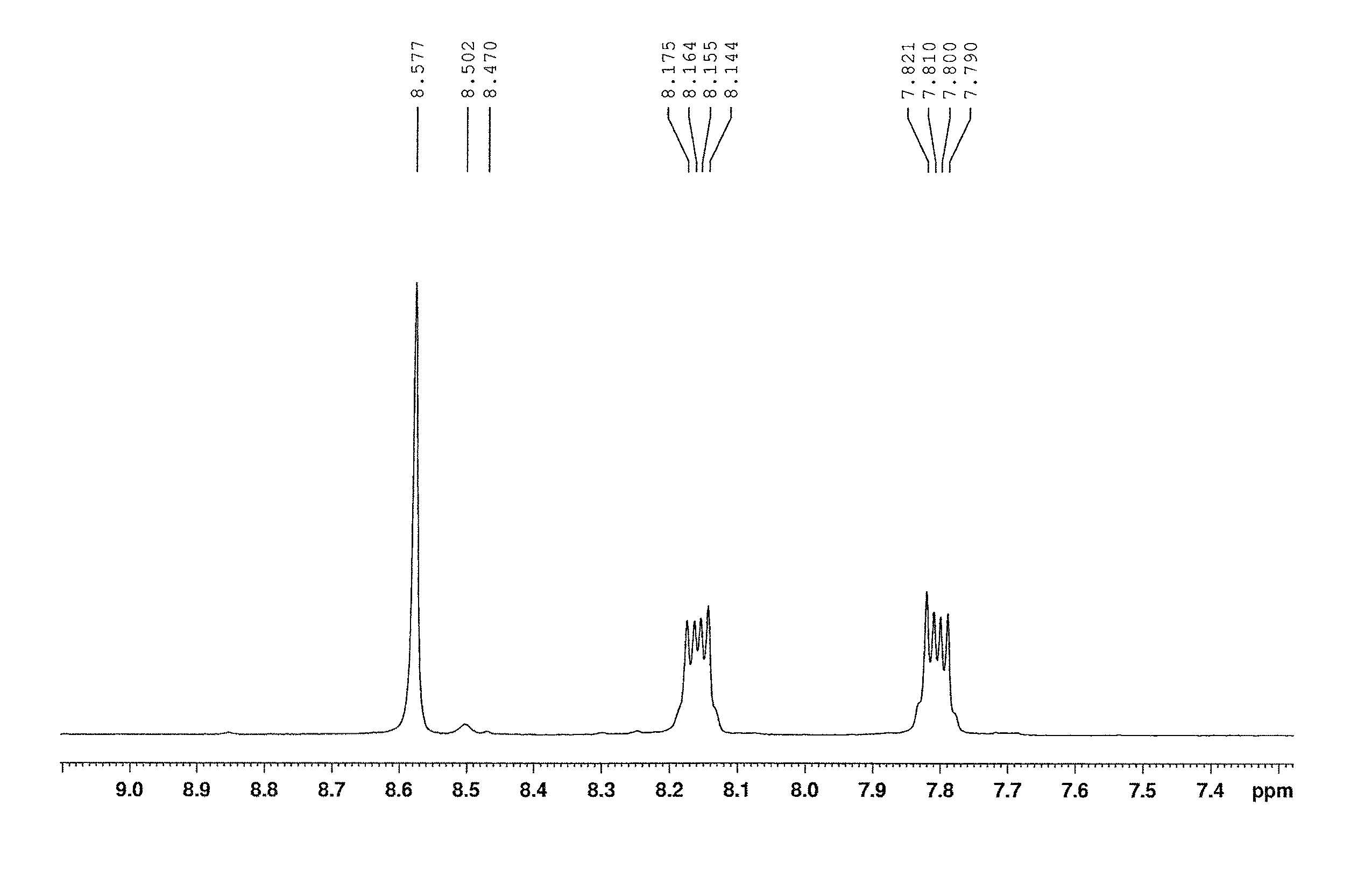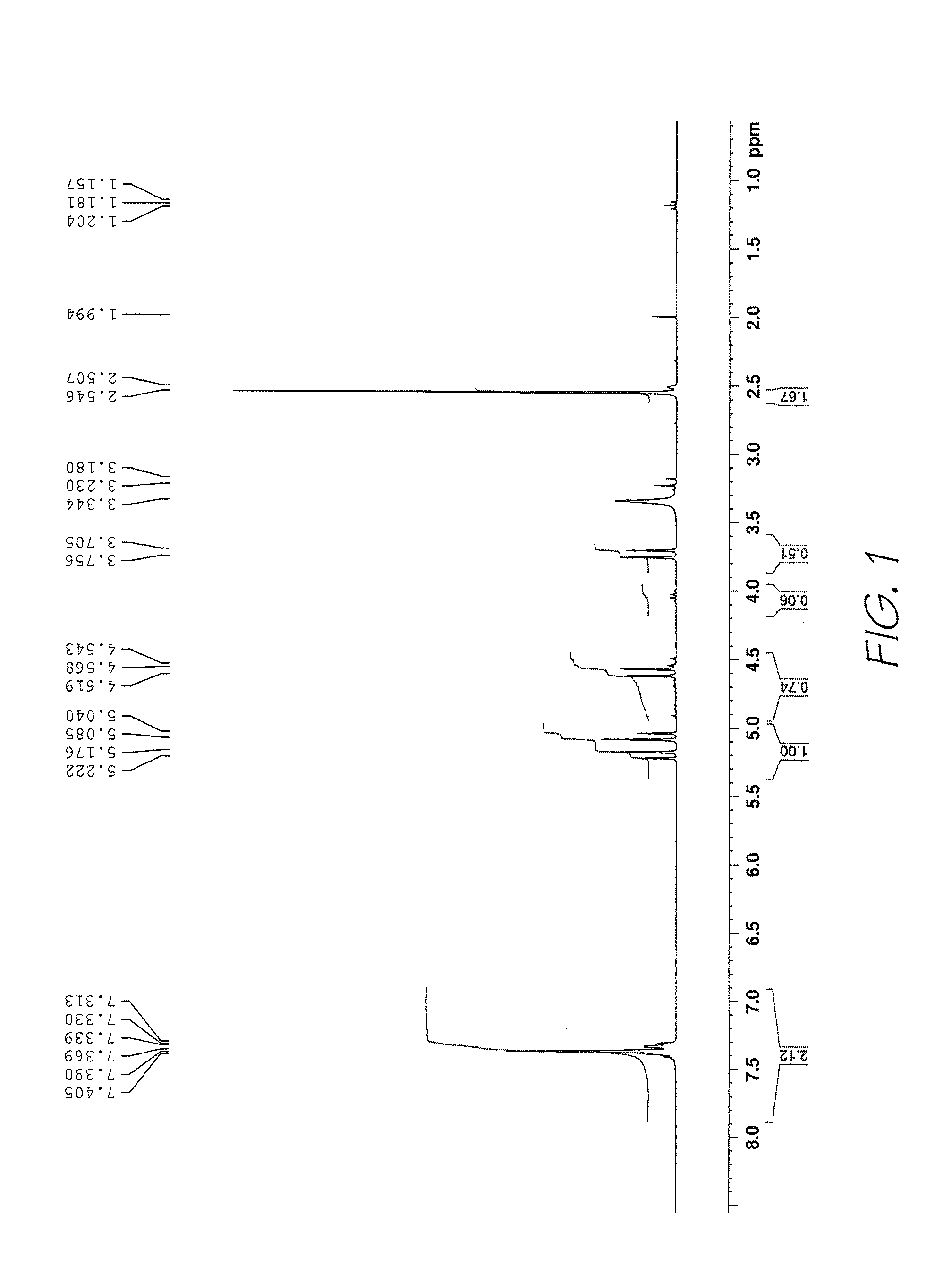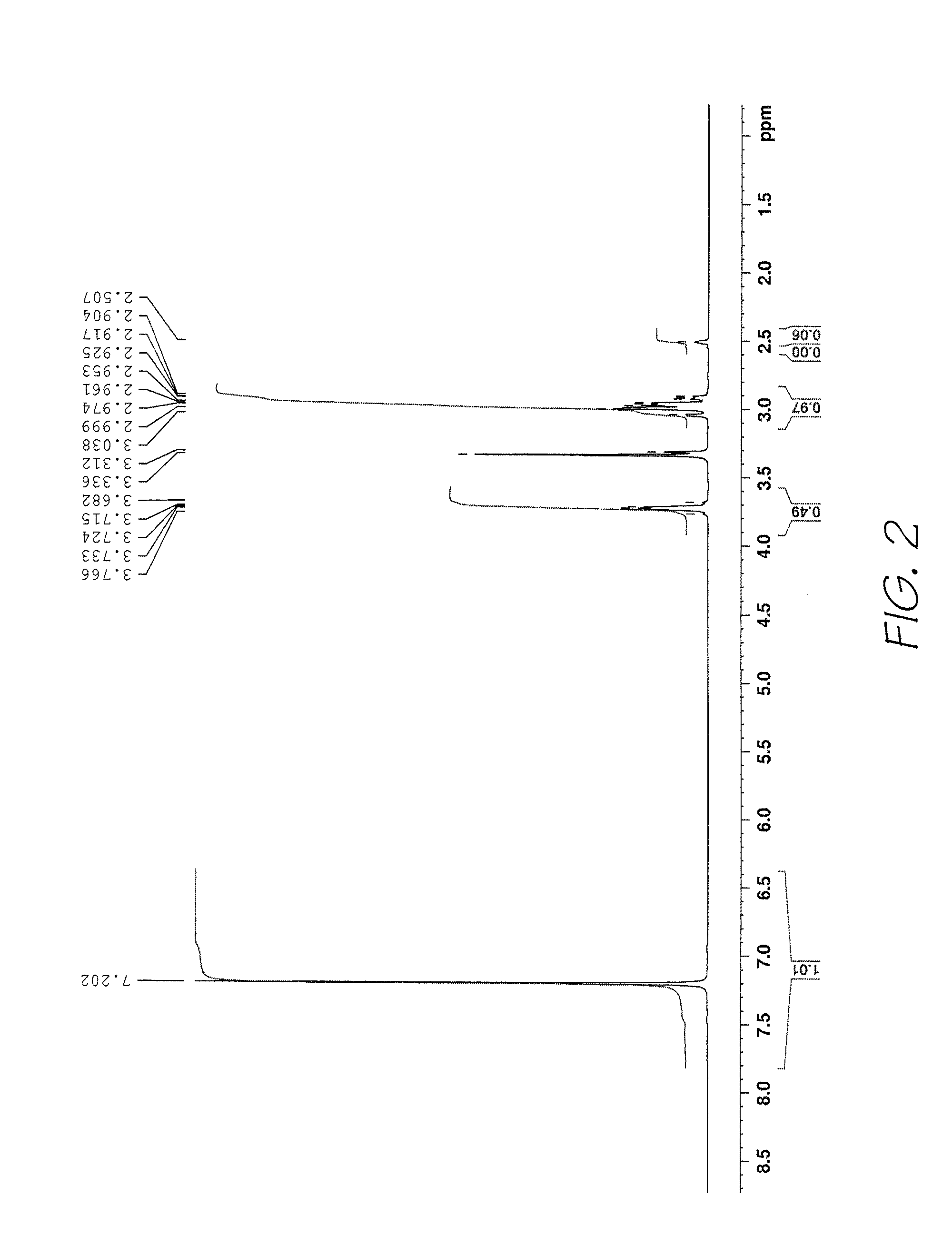Method of preparing naphthalocyanines
a technology of naphthalocyanine and naphthalocyanine, which is applied in the field of improving the method of synthesizing naphthalocyanine, can solve the problem of high cost of starting material 2 and achieve the effect of improving yield and minimizing polymer by-products
- Summary
- Abstract
- Description
- Claims
- Application Information
AI Technical Summary
Benefits of technology
Problems solved by technology
Method used
Image
Examples
example 1
1,4-dihydro-2,3-benzoxathiin-3-oxide 10
[0085]Sodium hydroxymethanesulfinate (Rongalite™) (180 g; 1.17 mol) was suspended in DMSO (400 mL) and left to stir for 10 min. before dicholoro-o-xylene (102.5 g; 0.59 mol), potassium carbonate (121.4 g; 0.88 mol) and sodium iodide (1.1 g; 7 mmol) were added consecutively. More DMSO (112 mL) was used to rinse residual materials into the reaction mixture before the whole was allowed to stir at room temperature. The initial endothermic reaction became mildly exothermic after around 1 h causing the internal temperature to rise to ca. 32-33° C. The reaction as followed by TLC (ethyl acetate / hexane, 50:50) and found to be complete after 3 h. The reaction mixture was diluted with methanol / ethyl acetate (20:80; 400 mL) and the solids were filtered off, and washed with more methanol / ethyl acetate (20:80; 100 mL, 2×50 mL). The filtrate was transferred to a separating funnel and brine (1 L) was added. This caused more sodium chloride from the product mi...
example 2
Tetrahydronaphthalic Anhydride 6
[0086]The crude sultine from about (126 g) was diluted in trifluorotoluene (100 mL) and then added to a preheated (bath 80° C.) suspension of maleic anhydride (86 g; 0.88 mol) in trifluorotoluene (450 mL). The residual sultine was washed with more trifluorotoluene into the reaction mixture and then the final volume was made up to 970 mL. The reaction mixture was heated at 80° C. for 15 h, more maleic anhydride (287 g; 0.29 mol) was added and then heating was continued for a further 8 h until TLC showed that the sultine had been consumed. While still at 80° C., the solvent was removed by evaporation with a water aspirator and then the residual solvent was removed under high vacuum. The moist solid was triturated with methanol (200 mL) and filtered off, washing with more methanol (3×100 mL). The tetrahydronaphthalic anhydride 6 was obtained as a fine white crystalline solid (75.4 g; 64% from, 10) after drying under high vacuum at 60-70° C. for 4 h.
example 3
[0087]The sultine was prepared from dichloro-o-xylene (31.9 g; 0.182 mol), as described in Example 2, and then reacted with maleic anhydride (26.8 g; 0.273 mol) in toluene (300 mL total volume) as described above. This afforded the tetrahydronaphthalic anhydride 6 as a white crystalline solid (23.5 g; 64%).
PUM
| Property | Measurement | Unit |
|---|---|---|
| Temperature | aaaaa | aaaaa |
| Equivalent mass | aaaaa | aaaaa |
Abstract
Description
Claims
Application Information
 Login to view more
Login to view more - R&D Engineer
- R&D Manager
- IP Professional
- Industry Leading Data Capabilities
- Powerful AI technology
- Patent DNA Extraction
Browse by: Latest US Patents, China's latest patents, Technical Efficacy Thesaurus, Application Domain, Technology Topic.
© 2024 PatSnap. All rights reserved.Legal|Privacy policy|Modern Slavery Act Transparency Statement|Sitemap



